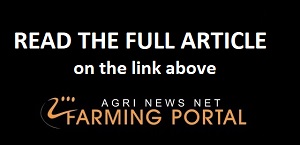The total cumulative monthly demand for milk, consisting of locally produced milk less net exports (total exports inclusive of sales to BLNE countries less total imports) for the first eight months of 2022 is 4,4% less than in the same period in 2021 and if compared to the same period as in 2020 it is 7,8% lower (milk equivalent bases). The demand for unprocessed milk has stagnated since 2019 on 3,4 million tons per year. It is even possible that the demand for unprocessed milk will in 2022 be slightly below 3,4 million tons. It seems that the market is not concerned with this phenomenon and that supply is in balance with the demand for the different years analysed. Dairy farmers are faced with the question of whether it is worthwhile to channel scarce production factors (e.g., water and capital) into a stagnating industry. Data provided by NielsenIQ for several quarters indicates that sales are down on a wide front of major dairy products. In that regard discussions with market role players indicated that they are not concerned about the stagnation in the demand for unprocessed milk and they warned that the production of unprocessed milk should follow demand which is down. In most cases, the affordability and pressure on consumer disposable income are provided as the reason for the stagnation in demand. This explanation is too shallow since these pressures have been present since 2014 and even before that to a lesser or more substantial rate.
 Insights into the plant-based dairy market
Insights into the plant-based dairy market
Over the past decade-plus, pseudo products that did not meet the criteria of milk as the mammary secretion of animals without either addition to it or extraction from it, intended for consumption as liquid milk or further processing, entered our market without too much trouble. At the same time, products were developed and introduced in our market, where quantities of milk constituents were replaced by non-dairy particles to produce a quasi-dairy product that could be misleading to consumers. Most of these products used the good market position of dairy to gain traction in the market, to the detriment of the primary industry. On-sight inspections and observations at major retail stores indicated that between 70% to 80% of the yoghurt section on the dairy shelves of these stores was dominated by dairy snacks. In discussions with some dairy processors, this finding was substantiated.
The viewpoint of the MPO is that there is a high probability that these products are the main contributors to the stagnation in the demand for unprocessed milk experienced since 2019, and that some processors are increasingly focussing on producing these products. The extraordinary increased pressure on the cost of living that developed in 2022 due to the attack of Russia on Ukraine could further weaken the demand for unprocessed milk. This, however, is a recent development. The average preliminary August 2022 unprocessed milk price in Europe(27) is 69% (R8.94/L EU average price Aug 2022, France R7.86/L, Poland R8.75/L and Ireland R10.12/L) up from August 2020 (source EU Commission) and the New Zealand price in July 2022 is up 54% (R7.42/L) from July 2020 (source CLAL- Farm-gate milk prices). These price increases are closely linked to the high increases in the prices of a wide range of major inputs. Over the period Aug 2020 to August 2022, the South African unprocessed milk price increased by 26.4%. The South African price is trailing the average European price by R2.39 and the New Zealand price by R0,87. The September feed meal price is the second highest for 2022, 10% up on July 2022 and 6% up on August. Compared to September 2021, the price of feed meal increased by 33% and compared to September 2019 it increase by 70%,















